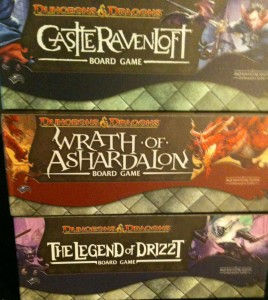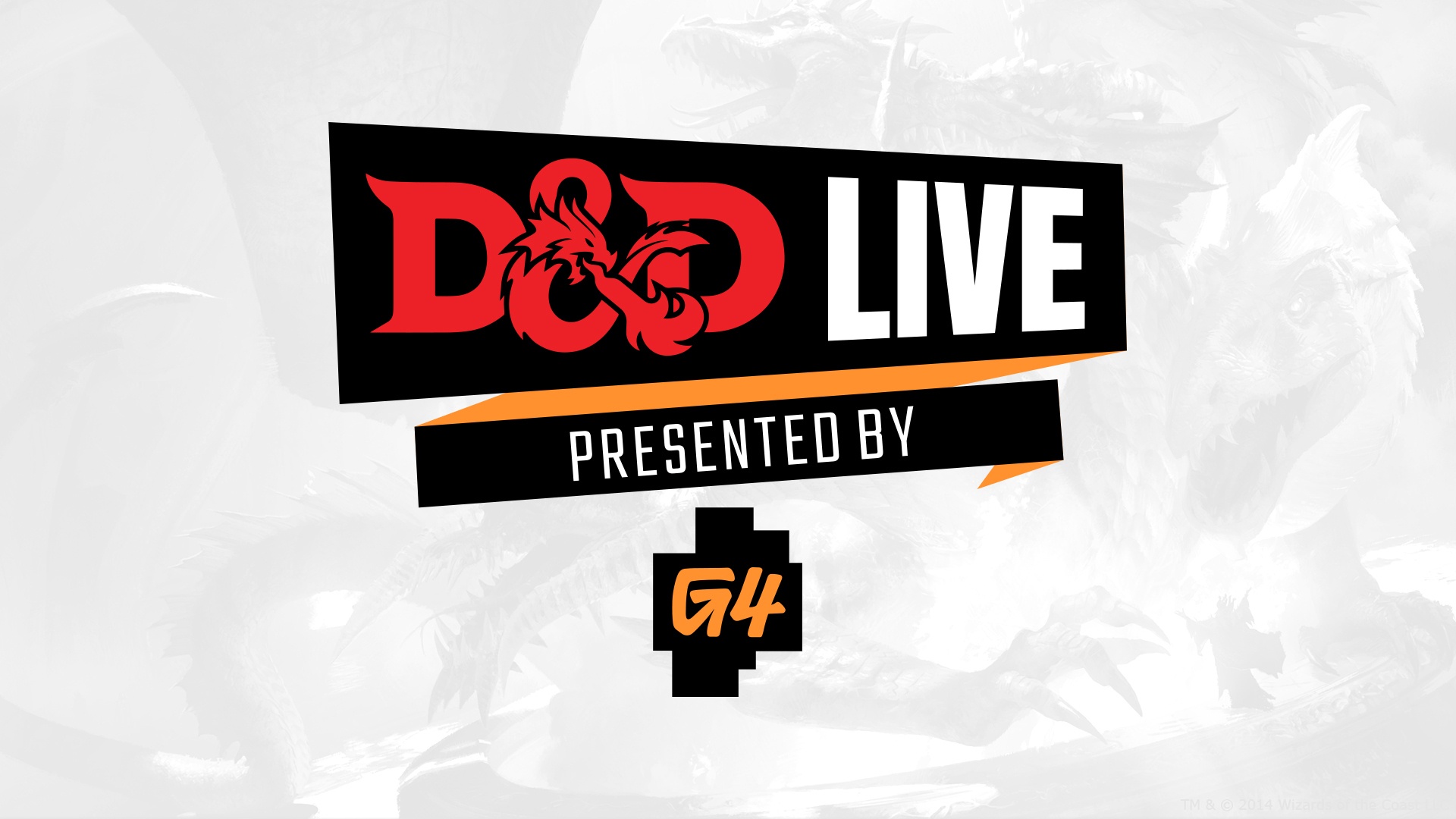Dungeons & Dragons Adventures System – Initial Impressions

 With all the discussion related to the upcoming Temple of Elemental Evil Board Game, I finally decided to purchase the earlier games in the D&D Adventure System. I have played a few adventures and am ready to share my initial impressions.
With all the discussion related to the upcoming Temple of Elemental Evil Board Game, I finally decided to purchase the earlier games in the D&D Adventure System. I have played a few adventures and am ready to share my initial impressions.
In this article, I will present my opinions about the system in general. In the upcoming weeks, I will post additional articles that will discuss the specific features of each of the games. Since the new game will be compatible with the previous ones, most of what I mention in this first article should also be true with the upcoming Temple of Elemental Evil Board Game.
Note that while the mechanics of the games is fairly stable, new mechanics do tend to be added as you progress through the series. This is generally expressed through the various cards and adventures rather than through the base game mechanics.
A Note of the 4th Edition Rule Set
I am not a fan of the 4th Edition of Dungeons & Dragons. In fact, this is the reason I have been avoiding this series until now. So why the change in heart?
I still feel that the 4th Edition makes a poor role-playing game due to its simplified style. What I had not considered before was that a simplified system may work well with a board game. These games do not require the same level of detail as an RPG, so the use of the 4th Edition rule set is not a major stumbling block. You need everything to be abstracted and quick in a board game, so the 4th Edition rules should fit these games better than they would fit a role-playing experience.
Components
Each game in this series includes:
Hero cards. These cards (more like tiles) include the information you need to play your character. This includes your AC, hit points, and movement speed, any special abilities the hero has, as well as how many Power cards the character starts with.
Power cards. These cards allow you to easily customize your character. The more sets you have, the most abilities that you have to choose from. Most characters start with two at-will powers, one daily power (meaning once per adventure), and one utility power.
Dungeon tiles. These tiles are one of the most important aspects of this game: you build the dungeon randomly using these tiles. For most adventures, you build the dungeon as you go along. This is in contrast to other dungeon crawl games I have seen (such as Mice and Mystics and Descent, where the scenario generally defines the full layout). This adds to the replayability of each of the adventures.
Monster cards. These cards contain the various enemies that you would face. Naturally, they fit the theme of the set (e.g., Castle Ravenloft includes a significant number of undead opponents).
Villain cards. The villain cards use the same tile stock as the hero cards. They represent the boss monsters in the game (which are referred to as “villains”). They tend to be more complex than the standard monsters.
Treasure cards. These cards represent the rewards you receive after defeating monster. These represent not only items collected but also events that work in your favor.
Encounter cards. These cards represent traps and random events (generally bad) that happen during the course of the adventure. They are used to apply pressure on the players to keep moving. They also help make each foray into the dungeon a little different, even when you are playing the same adventure.
Healing Surge tokens. There are actually quite a number of tokens in this game, many of which are used only in specific adventures. The Healing Surges are important because they allow you to revive a hero that has been reduced to 0 hit points. When you need to revive a hero and there are no Healing Surges remaining, you lose the adventure. You can adjust the challenge level of the game by either increasing or decreasing the number of Healing Surges that are available in an adventure.
A d20 Die. This is one of the major points that sets this system apart from other dungeon games I have seen (such as Descent or Mice and Mystics). This game does not use any custom dice. Instead, this game uses a standard d20 (some may question the use of the work “standard” with a d20 but this is Dungeons & Dragons). That is a welcome sight to someone like me who has a tendency to lose dice.
Key mechanics
One interesting aspect of these games is that the movement and actions of the monsters are abstracted. The monster card describes their tactics and you follow through on them. When there is a choice to make, it is up to the players to make it. The rules and balance of the game assumes that the players make such decisions in their favor.
The objective tiles in many scenarios is placed a particular part of the dungeon tile pile. The players draw from the top of the pile when they explore to get closer to their objective. Enemies will draw from the bottom of the tile pile to add more monsters and terrain without getting you closer to the objective.
This game includes three main decks to randomize the adventure: monster cards, treasure cards, and encounter cards.
Adventures
The adventure booklets for each game includes 13 adventures. The first adventure is designed for a single hero and is designed to help you get to know how the game flows. The bulk of the other adventures are designed for 2-5 cooperating heroes.
How does a solo player handle these later scenarios? The general way is for the player to handle multiple heroes. I prefer to use two heroes, though other players prefer to control more. An alternative is to play with just one hero and add an extra healing surge (this was suggested in a Wizards PDF that presented three adventures that combined Castle Ravenloft and Wrath of Ashardalon).
Conclusion
These games are an excellent compromise between representing a dungeon crawl while keeping a simple rules set. Some adventures can get a bit complicated, especially those that are later in a game’s adventure book.
These sets can also be used to generate random adventures for the role-playing rules. While there are no official rules for these, you can see an example of these over at Black Belt Gaming.
Now that we have taken a look at the system in general, we are ready to take a look at the specific games. In the next article in this series, we will take a look at Castle Ravenloft.
Remember to draw those treasure cards.
Pineleaf Needles
Discover more from DDO Players
Subscribe to get the latest posts sent to your email.




Nice review! I’ve had Wrath of Ashardalon in my closet for ages and happened to pull it out just last week to try with a friend. We really enjoyed it, even if most of the mechanics were random random random. With just two of us, we also found that the mix of classes really made a big difference. Great seeing you guys review D&D stuff.
Dan
Glad you enjoy we talk and review D&D stuff Dan!
We will have a ton of things coming up as I’m going to cover Gencon for the sight! So look for more!